|

by Marlene Cimons
May 02,
2018
from
NexusMediaNews Website
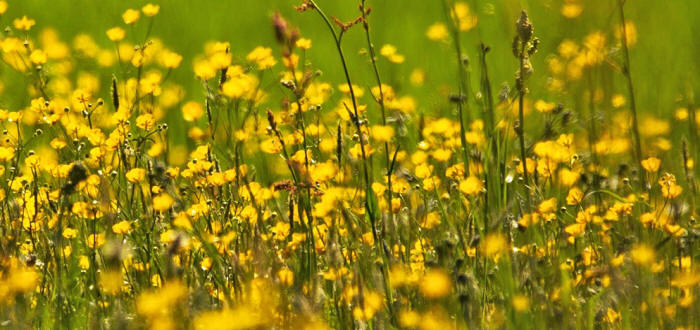
Buttercups.
Source: Pixabay
Some plant
species
are hitting
snooze on flowering season
to cope with the
stresses
of a warming
planet...
Numerous plant species have found a novel way to cope with
environmental dangers, such as a prolonged climate change-induced
drought:
They sleep through
it...
An international research
team has discovered at least 114 species capable of living dormant
under the soil for up to two decades.
Dubbed "Rip Van Winkle
plants" by scientists, they are still alive - they just don't poke
their heads out every spring. This extended snoozing underground
enables them to survive through tough times.
These plants are
widespread and found in different ecosystems.
It's an adaptation that has evolved over many decades and may well
be taken on by other species that currently don't take lengthy naps,
but may begin to do so in response to climate change, according to
the researchers.
"The condition has
evolved many, many times, and I see no reason to believe that it
cannot evolve quickly in other species," said Richard Shefferson,
an evolutionary ecologist at the University of Tokyo.
"I don't think it can
be ‘learned,' but perhaps if environmental conditions were
right, then many species that we do not think go dormant might
actually do so."
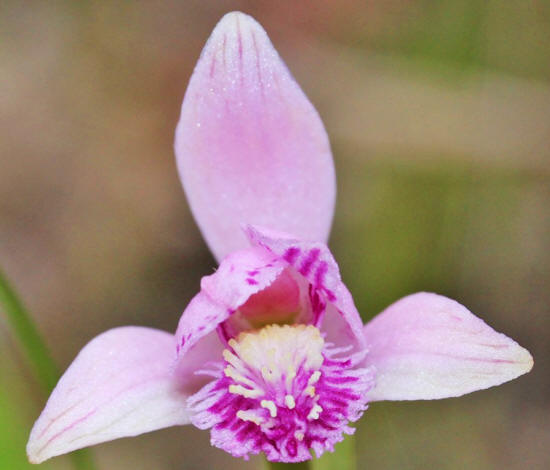
Pogonia japonica flower.
Pogonias are dormancy-prone plants.
Source:
Alpsdake
Dormancy is a bet-hedging
strategy with a short-term downside - the plants miss the
opportunity to grow and reproduce - but long-term upside - they
avoid danger and extend their lives.
It's one more adaptation
to escape the rigors of climate change - drought, severe rainfall,
wildfires and heat waves - which already have prompted plants and
animals to migrate.
Plant dormancy isn't new.
It first was observed
nearly a century ago, although it hasn't been studied extensively
until recently.
"Back in the 1930s or
1940s or so, European biologists started to notice that some
individual [plants] occasionally wouldn't sprout for a year or
two, sometimes more, which made dormancy very easy to confuse
with death," said Shefferson, lead author of a recent study
(Drivers
of Vegetative Dormancy across Herbaceous Perennial Plant Species)
published in the journal Ecology Letters.
"Then, suddenly, a
year or two after last seeing a plant, a large adult plant would
appear again, and so had to have been there over the interim
period."
While dormant plants
can't engage in photosynthesis, flower or reproduce,
"many species have
found ways to overcome the loss of opportunities to
photosynthesize, especially by evolving mechanisms to obtain
carbohydrates and nutrients from soil-based fungal associates,"
said Michael Hutchings, emeritus professor of ecology at the
University of Sussex and a study co-author.
"This allows them to
survive and even thrive during dormant periods."
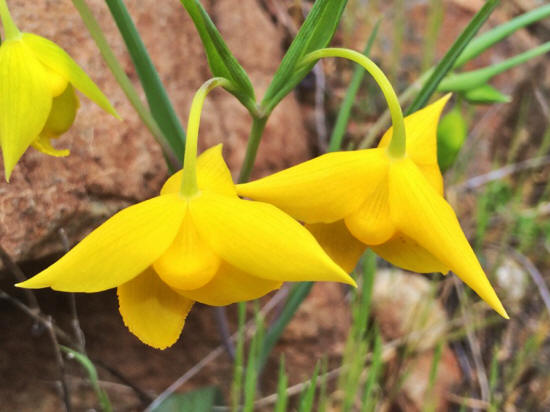
Golden fairy lantern lilies
are
dormancy prone.
Source:
Tim Berger
In addition to
climate change, numerous other
factors influence dormancy, among them, their location and the
appetite of local herbivores, the scientists said.
"Individual plants
growing in drier or less nutritious sites might be inclined to
go into dormancy more," Shefferson said. "Plants that get
munched on more are less likely to be seen in the next year."
Their study found that
dormancy was more common near the equator, where disease,
competition, herbivores and fire are more severe.
"In fire prone areas,
there appears to be an advantage to plants remaining dormant and
then sprouting after fire, when favorable conditions exist for
growth and flowering," said Eric Menges, a study co-author and
senior research biologist at Archbold Biological Station in
Venus, Florida.
Richard Shefferson
agreed.
"Mature plants
re-sprout much more after fire," he said.
"Large catastrophic
fires are bad everywhere, but if you are a dormancy-prone plant,
there is certainly a chance that you can avoid the sterilizing
heat of the fire by remaining underground."
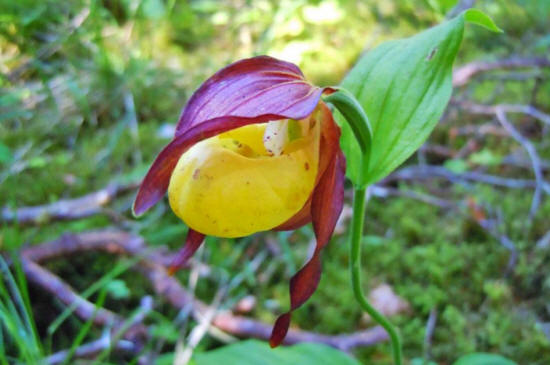
A lady's slipper orchid.
Source:
Ecology Letters
Many species of orchids exhibit this behavior, as well as,
-
a certain species
of ferns
-
many lily species
-
many species of
buttercup
-
Solomon's seal
-
some tulip
species
-
likely all of the
perennial milkweeds
-
some pogonia
species,
...according to
Shefferson.
To be sure, dormancy poses its own hazards and doesn't always
protect against climate change.
The early spider
orchid, for example, which Hutchings has studied for more than
30 years,
"certainly has a
problem with dormancy as a strategy in a world subject to
climate 'warming',
primarily because its life span is very short," Hutching said.
"This puts a lot of pressure on it to set seed in the few years
in which it emerges above ground before it dies," he continued.
"Early spider orchid
emits a scent that attracts a specialist pollinator - in this
case a
male bee. This bee tries to
copulate with the orchid, because - at least before the
'climate warmed up' too much - female bees would not be
flying when the orchid was in flower.
In attempting to
copulate, the bee would remove pollen masses, which would then
be transmitted to the next flower the bee tried to copulate
with, resulting in cross-pollination."
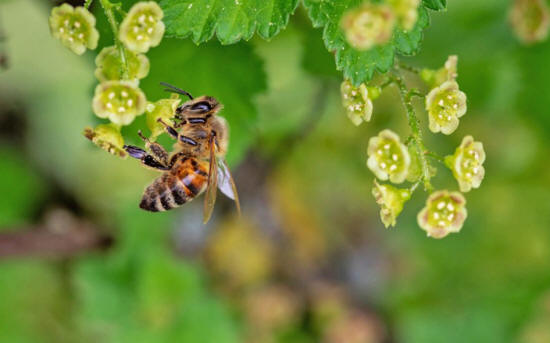
A bee pollinating.
Source:
Pixabay
But warmer springs have prompted female bees to emerge too early,
before flowering, almost every year.
As a result,
"the orchid is losing
out on visits from the male bee, and rarely setting seed,"
Hutchings said.
"This illustrates the
potential for climate change to threaten survival of
populations, and maybe even whole species.
We think this is by
far the best-documented example to date of climate 'warming'
disrupting the vital synchrony between behaviors in different
species.
Ecologists expect
that there are many more as yet undocumented examples of this
sort of thing happening."
Also, if the level of
dormancy is very high - as it is with coral root orchids and Indian
pipes - land managers sometimes mistakenly believe that their
populations have become extinct and don't realize that it may be
best to let sleeping plants lie.
"The reality is that
the population is still there, but it is mostly underground,"
Shefferson said.
"I have seen a number
of land managers wrestle with whether to keep managing land for
a particular plant species once the populations seems to have
disappeared.
In some cases, plants
do sprout up again in the future. This causes headaches for
managers and others interested in the conservation of these
plants."
While dormancy certainly
can help certain plants survive in a warming world, it ultimately
won't save them if 'temperatures continue to rise unabated' (or
not...?), the scientists
said.
"Dormancy… may offer
an opportunity to hunker down and sit out bad times, but unless
future conditions are good enough often enough to encourage
emergence, dormancy will eventually do you no good at all,"
Hutchings said.
"Many plants die in
dormancy.
So, while dormancy is
a help in overcoming the effects of adverse conditions, it's not
a complete insurance against harmful conditions."
|






